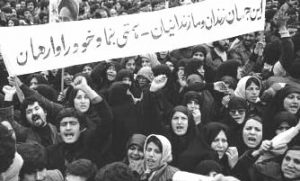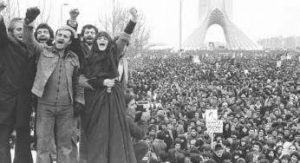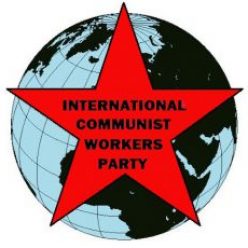Mobilize the Masses for Communism

Tehran, 1978
The working class in Iran has a long history of communist struggle which goes back to the early 20th century. Workers from Russia, Iran, and throughout the Caucasus organized a cross-border, multi-ethnic, revolutionary communist workers movement, concentrated in the oil fields of Baku, in Azerbaijan.
During the Civil War that followed the Bolshevik Revolution of 1917, the Iranian Communist Party made its own revolution. They united with a peasant nationalist movement and declared the Soviet Socialist Republic of Iran. The Soviet Red Navy supported them during the Civil War. But at the end of the Civil War, the leaders of the Soviet Union decided they needed “correct diplomatic relations” with the Iranian king (the Shah). They pulled the rug out from under the Iranian revolutionaries and their Soviet Socialist Republic was defeated.
Nevertheless, the Iranian Communists continued organizing, but not for communist revolution. They adopted a reformist program of working for bourgeois democracy, uniting the country against British imperialism, and creating trade unions.
They organized secret party cells and unions in the oil refinery and oilfields of the Anglo-Persian Oil Company. In 1929, nine thousand oil workers suddenly struck in Abadan. This led to a general strike, violently suppressed with the help of British Marines. The Communist Party was forced underground, but it continued organizing illegal unions and strikes. These were always followed by mass arrests and the continual rebuilding of underground organizations in the railways, mines and factories.
During World War II, Iran was jointly occupied by Britain and the Soviet Union. Political prisoners were released, and a broad coalition of Marxists organized the Tudeh Party (Party of the Masses) in 1941. After World War II it became a mass party with a membership of 20,000 and supporters in mass organizations of at least 80,000. They led strikes of 65,000 workers in the oil fields,. They organized a May Day March in 1946 of almost half a million people.
But Tudeh had the suicidally wrong idea of an anti-imperialist united front with bourgeois nationalists. In 1952-53, Tudeh supported Prime Minister Mosaddeq who wanted to nationalize the oil industry in his confrontation with the US-backed Shah. When Tudeh organized a nation-wide general strike and mass rallies in all the main towns to support him, Mossadeq told the army to clear the streets of Tudeh crowds. Tudeh went home. When the CIA organized a military coup to kick Mosaddeq out and restore the Shah to power, the Iranian security forces hunted down the underground Tudeh organization, arresting thousands and killing dozens of its top leaders.
Tudeh, which had been the largest and best organized opposition party, was wiped out in 1953 without putting up much resistance. The younger generation of Marxists tried to learn from their mistakes in the late 1960s and 1970s.
However, in 1978-79, when a mass movement was organized against the Shah, even the most revolutionary organizations, organized with Maoist or pro-Cuban politics and a program of guerrilla struggle, were totally isolated from the masses of workers. The Ayatollah Khomeini was the only leader with a mass base. When the country was convulsed by a general strike and a military coup, he was able to take power. Tudeh backed Khomeini, hoping that overthrowing the Shah would allow room for Marxists to organize. Other more revolutionary organizations, such as Peykar, never endorsed Khomeini, but hoped to take advantage of the upheaval to be able to organize. By 1981, all of these organizations had been wiped out and their members were dead, in prison, or in exile.
The Iranian working masses have suffered through nearly 40 years of a theocratic dictatorship. Communists in Iran have relied on help from a socialist neighbor, organized militant trade union struggle and guerrilla war, backed bourgeois nationalists and even the ayatollah, and been wiped out every time. This time, learning valuable lessons from our collective experience, communists in Iran and all over the world must mobilize the working-class masses for communism.

Tehran, 1979

